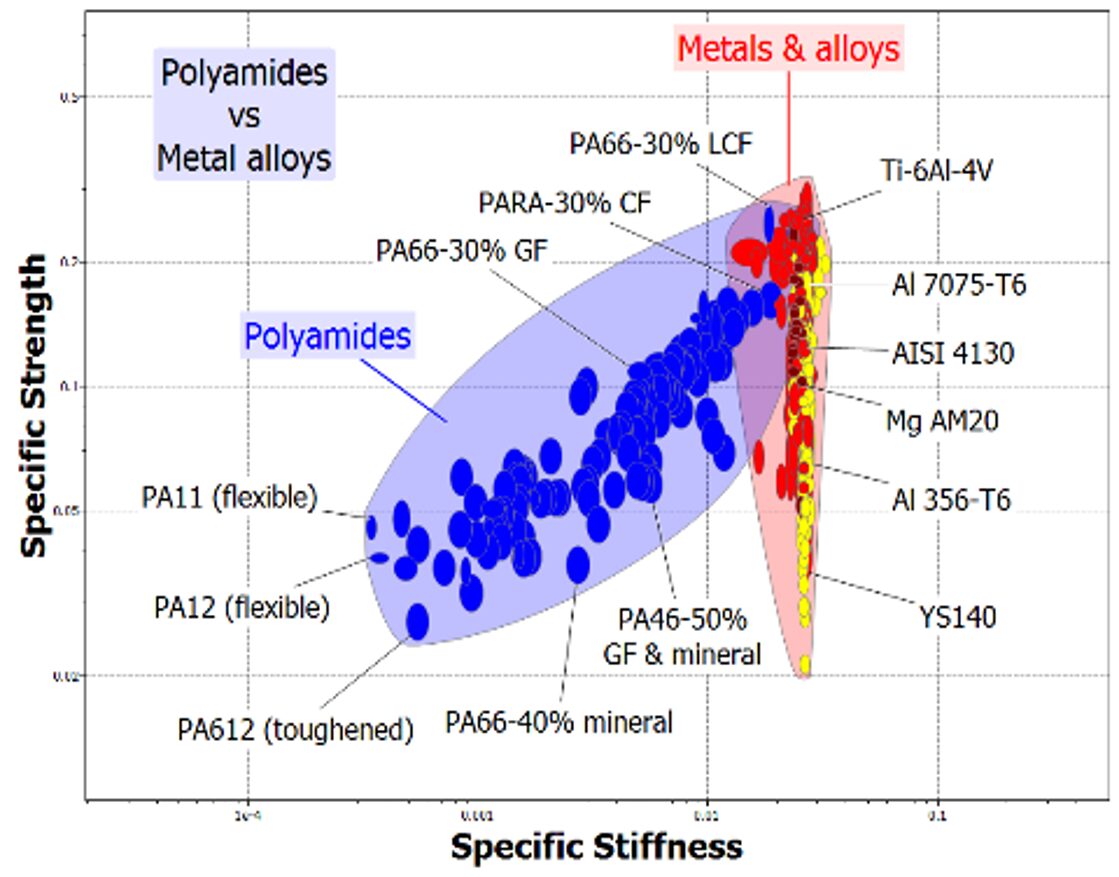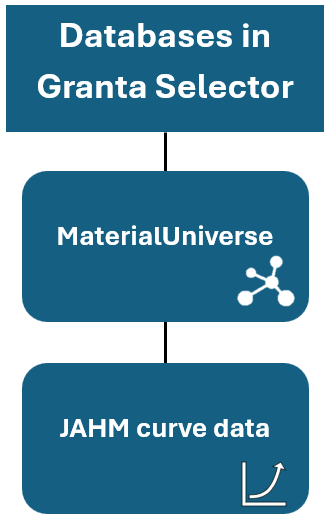University teams can greatly benefit from the versatile capabilities of Ansys Granta Selector. Here are some potential uses that can enhance your projects:
Design and Material Innovation
- Composite Panels for Solar Cars, FSAE, Rovers, and Lightweight Devices: Utilise the Synthesizer Tool to innovate with composite panels and other lightweight materials, essential for projects like solar cars, Formula SAE vehicles, rovers, or any machine where reducing weight is crucial.
Access to Aerospace Material Databases
- Rocketry Components: Gain access to extensive aerospace material databases, making it easier to select the best materials for rocketry components, ensuring high performance and reliability.
Optimal Battery Module Selection
- Electric Devices: Use the Battery Selection Tool to identify the optimal battery modules for your electric devices. Compare different battery cells and configurations to achieve the best performance and efficiency.
Streamlined Reporting
- Design and Material Selection Process: Take advantage of the built-in reporting feature to easily collect and document your design and material selection process. This makes it simpler to share your findings and decisions with your team or for academic purposes.
Cost and Environmental Impact Estimation
- Manufacturing Costs: Estimate the manufacturing costs of your design, considering factors like energy usage and CO2 footprint. This helps you make cost-effective and environmentally responsible decisions right from the conceptual design phase.
By leveraging these features, university teams can drive innovation, optimise material selection, and streamline their design processes.

What is Ansys Granta Selector?
Ansys Granta Selector is an excellent resource, offering a comprehensive ‘encyclopedia’ of materials data along with user-friendly visual tools for comparison and analysis.
This combination allows you to quickly evaluate the technical, economic, and environmental performance of different materials, helping you identify the best options and avoid costly development delays by focusing on the most promising materials.

MaterialUniverse: This database includes over 4,000 datasets of standard engineering materials, providing detailed technical, economic, and environmental information. Whether you need material data for simulations or details on the generic grade of each material for your engineering project, MaterialUniverse offers reliable and ready to use materials datasheets.
JAHM curve data: This extensive database offers temperature-dependent mechanical, thermal, physical, and electrical properties . It includes stress-strain curves, fatigue, creep, and magnetic data. JAHM is particularly useful for understanding how temperature affects mechanical performance.
Watch this video below to see an introduction to Granta Selector and a demonstration of how it works on an Automotive Instrument Panel example:
Materials Selection with Ansys Granta – Introduction
The Benefits of Accurate Material Selection with ANSYS Granta Selector
Choosing the right materials is crucial for the success of any engineering project. Here’s how Ansys Granta Selector can help you make the best choices:
- Problem Solving and Support for Initiatives: or example, a Formula SAE team could use Granta Selector to find lightweight and durable materials for their vehicle, enhancing performance while reducing costs.
- Enhanced Decision-Making: Granta Selector aids in making better decisions during early-stage design or redesign, reducing time-to-market, and increasing confidence during development. For example, a rocketry team could use Granta Selector to find materials that can withstand high temperatures and stresses, ensuring their components are both safe and reliable.
- Innovation and Efficiency: With Granta Selector, you can innovate products by identifying optimal materials, quickly answering material-related questions, and validating material choices to reduce cost, weight, and environmental impact. This tool empowers you to push the boundaries of what’s possible in your designs.
- Time Savings: Granta Selector can halve the time required for complex materials studies and property comparisons, facilitating the identification of new materials for product development.
Who Else Can Benefit from ANSYS Granta Selector?
Learning to use Ansys Granta Selector can significantly enhance your future career, as it is a valuable tool for a wide range of roles and industry sectors. Regardless of your specific role or the industry you work in, many professionals can benefit from its powerful features. Here’s a look at who typically benefits the most from Granta Selector:
Material Specialists
- Reference Database: Utilise Granta Selector as a comprehensive reference database for making informed material decisions and accessing detailed material property information.
- Conceptual Design: While not directly involved in simulations, material specialists play a crucial role in product design, especially during the conceptual stage.
Product Designers, Project Engineers, and Simulation Engineers
- Conceptual Design Phase: Identify the right material or battery module candidates early in the design process.
- Simulation-Ready Data: Feed accurate, simulation-ready data into Ansys Mechanical.
- Material Alternatives: Locate alternative or superior materials for your products, enhancing performance and sustainability.
Research and Development (R&D)
- Material Selection: Primarily used during the material selection process to identify the most suitable materials for innovative projects.
Academia
- Research: Compare novel materials and use Granta Selector as a reliable reference data source.
- Teaching: Academics familiar with Granta EduPack will find similar functionalities in Granta Selector, although it does not permit publishing.
Exploring More Advanced Capabilities within Ansys Granta Selector
Ansys Granta Selector is not just about material databases; it also offers a suite of advanced tools designed to make your material selection process more efficient and insightful. Here’s a closer look at some of these powerful tools:
Battery Selection Tool
This tool helps you make informed decisions about which battery cells to choose, determine the optimal configuration, and compare the performance of the resultant battery module. It includes data for approximately 120 generic battery cell types and access to over 105,000 polymers for casing and insulation materials.
Materials Selection with Ansys Granta – Battery Designer
Synthesizer Tool for Composite Materials
The Synthesizer Tool enables product designers and material engineers to predict the performance of hybrid materials and structures. For example, it allows you to compare the calculated properties of sandwich panels against steel or polymer plate sections. This tool is invaluable for designing innovative, high-performance materials.
Materials Selection with Ansys Granta – Composite Materials
Part Cost Estimator
Designed to estimate manufacturing costs at the conceptual design phase, this tool evaluates materials, manufacturing methods, and batch size to provide early cost estimates. It’s particularly useful for university teams balancing cost efficiency with material performance during project development. Additionally, it aids in calculating budgets and planning for grants or funding from the initial stages of design and planning.
Eco Audit Tool
The Eco Audit Tool allows for a quick evaluation of the environmental impact of products, focusing on energy usage and CO2 footprint. It identifies which of the main life phases is most demanding in terms of both and provides guidance on how to reduce the environmental impact.
Materials Selection with Ansys Granta – Environmental Impact Study: Eco Audit Tool
By using Ansys Granta Selector, university teams can transform their material selection and design processes, enabling them to make informed, sustainable, and cost-effective decisions from the very start. If you’re interested in incorporating Granta Selector into your university projects or have any questions, contact our LEAP team for guidance and support.

